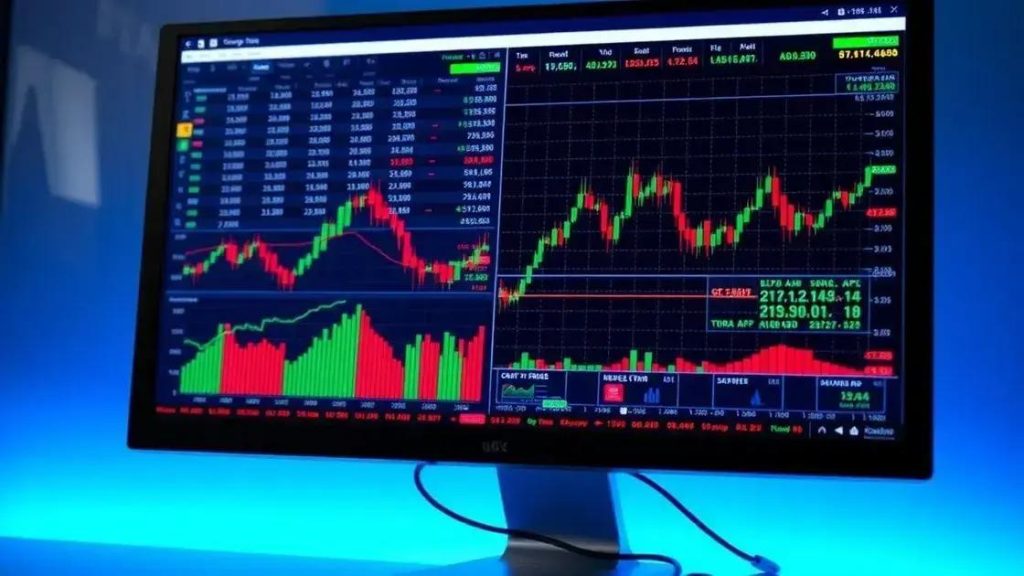Quantitative trading signal optimization: boost your strategies

Quantitative trading signal optimization involves refining trading strategies using data analysis, machine learning, and backtesting to enhance accuracy and improve trading performance effectively.
Quantitative trading signal optimization is an essential aspect for traders looking to improve performance. Have you ever wondered how tweaking your strategies can lead to better results? Let’s dive in and explore how it can make a difference.
Understanding quantitative trading signals
Understanding quantitative trading signals is essential for anyone looking to excel in the financial markets. These signals help traders make informed decisions based on data and statistical analysis rather than relying solely on intuition.
What Are Quantitative Trading Signals?
At their core, quantitative trading signals are calculations used to identify potential trading opportunities. These signals are generated by algorithms applying quantitative techniques to market data.
Key Components of Trading Signals
Several critical components make up effective trading signals:
- Data Analysis: The foundation of any quantitative model, analyzing historical data helps predict future movements.
- Indicators: Common indicators include moving averages and relative strength index (RSI), which indicate trends and momentum.
- Risk Management: Control over losses is vital. Successful traders implement strategies to minimize risks.
The effectiveness of these signals often depends on the quality of data and parameters chosen during model development. For example, using diverse datasets can improve accuracy in predicting price movements.
Additionally, constantly refining and optimizing these models is necessary. This can include adjusting algorithms based on new data and market conditions.
Why Are Trading Signals Important?
They make trading more objective. Relying less on emotions can lead to better consistency and outcomes. Moreover, well-constructed signals have the potential to identify profitable trades that may be overlooked by manual analysis.
In a landscape that evolves quickly, understanding how to interpret these signals becomes vital for maintaining a competitive edge in the market. Thus, combining technological tools with analytical skills proves to be a successful strategy.
Key techniques for optimizing signals

Optimizing trading signals is crucial for achieving superior performance in the market. To improve these signals, various techniques can be employed by traders and analysts alike.
Data Cleaning and Preparation
One of the first steps in optimizing signals is to ensure that the data used is clean and relevant. This involves removing any inaccuracies or outliers from historical data.
Proper data preparation leads to:
- Enhanced Accuracy: Accurate data increases the reliability of the signals.
- Improved Insights: Clean data helps in identifying trends more effectively.
- Fewer Errors: Reducing noise in data leads to better decision-making.
Once the data is prepared, it can be analyzed to derive potential signals that could guide trading decisions.
Algorithm Selection
Choosing the right algorithm is another critical component. Several algorithms can be used to create quantitative trading signals, and each has its strengths. For instance, machine learning algorithms can learn from data patterns and adjust accordingly.
Some popular algorithms include:
- Linear Regression: Used to forecast trends based on historical data.
- Decision Trees: Helps in classifying data and making decisions based on predictive factors.
- Neural Networks: Capable of recognizing complex patterns within data.
Selecting the appropriate algorithm can significantly impact signal accuracy and effectiveness.
Fine-tuning model parameters also plays a major role in optimization. By adjusting settings and hyperparameters, traders can improve the performance of their models based on the strategies they wish to implement.
Backtesting Strategies
Backtesting is a vital technique in optimizing trading signals. It involves testing the signals against historical data to see how they would have performed in the past.
Benefits of backtesting include:
- Performance Evaluation: Understand how well the signals would have worked historically.
- Strategy Refinement: Identify weaknesses in current strategies and make adjustments.
- Risk Assessment: Evaluate potential risks associated with specific signals.
Successful traders utilize backtesting not only to validate their models but also to make necessary tweaks for future trading.
Challenges in signal optimization
The process of optimizing trading signals involves various challenges that traders and analysts face. Understanding these challenges can help in developing better strategies and overcoming potential pitfalls.
Data Quality Issues
One major challenge in signal optimization is the quality of data. Poor quality data can lead to inaccurate signals. This issue can stem from different sources such as:
- Incomplete Data: Missing values can distort the analysis.
- Outdated Data: Relying on old information may not reflect current market conditions.
- Noise: Random fluctuations can create misleading signals.
Addressing these issues is crucial for creating reliable signals. Ensuring data is accurate and relevant helps to enhance the overall effectiveness of trading models.
Model Overfitting
Another significant hurdle is model overfitting, where a model learns too many details from the training data. This can negatively impact performance on unseen data. Traders should aim to:
- Simplify Models: Use simpler models to avoid capturing noise.
- Regularization Techniques: Implement techniques to reduce model complexity.
- Cross-Validation: Use cross-validation to assess model performance on different data subsets.
By employing these strategies, traders can create models that generalize better to new market conditions.
Changing Market Conditions
Market conditions are constantly evolving, which can affect the effectiveness of trading signals. External factors such as economic indicators, geopolitical events, and market sentiment can lead to sudden changes.
It is crucial for traders to remain adaptable and continuously refine their signal strategies. Regularly updating models based on current trends can help mitigate this challenge.
Technical Limitations
Finally, traders often face technical limitations, such as computational power and software capabilities. These factors can affect the speed and efficiency of model training and signal generation.
Investing in better technology and software can aid in handling large datasets and complex algorithms.
Additionally, exploring cloud-based solutions can provide scalable resources that support advanced trading strategies.
Real-world examples of successful strategy enhancements

Real-world examples of successful strategy enhancements highlight how traders can achieve substantial improvements in their trading performance. Learning from these examples is key for anyone interested in quantitative trading signal optimization.
The Rise of Algorithmic Trading
Many trading firms have successfully implemented algorithmic trading strategies to optimize their signals. One notable example is a hedge fund that used a custom algorithm to analyze various market indicators and execute trades automatically based on real-time data.
This approach helped them identify profitable patterns quickly, resulting in:
- Faster Execution: Trades were executed in milliseconds, minimizing latency.
- Data-Driven Decisions: The strategy relied on statistical analysis rather than emotions.
- Enhanced Returns: The firm reported an increase in annual returns by over 15% after implementation.
Case Study: Using Machine Learning
Another prominent success story involves a trading firm that utilized machine learning techniques to improve signal accuracy. By training models on historical price data, they managed to identify hidden patterns that traditional methods overlooked.
Some benefits from their approach included:
- Improved Predictive Accuracy: They achieved up to a 20% enhancement in prediction accuracy.
- Dynamic Strategy Adjustments: Models could adapt to new data, allowing for more resilient strategies.
- Reduced Risks: Enhanced risk assessment led to better management of potential losses.
This real-world application of machine learning stands as a testament to the importance of technology in quantitative trading.
Small Firm vs. Big Corporation
A small trading firm used a combination of backtesting and real-time simulations to refine their trading strategies. By running multiple scenarios, they could test various parameters and optimize their signals accordingly.
Their systematic approach included:
- Continuous Monitoring: Regularly reviewing performance data helped them stay on track.
- Feedback Loops: Incorporating trader feedback into the optimization process led to better strategies.
- Cost Efficiency: They utilized cost-effective tools to implement their strategies, demonstrating that success isn’t solely for large firms.
These types of enhancements show that both large corporations and smaller firms can benefit by adopting advanced techniques and technologies in trading.
FAQ – Frequently Asked Questions about Quantitative Trading Signal Optimization
What is quantitative trading signal optimization?
It is the process of improving trading signals using data analysis and algorithmic techniques to enhance trading performance.
How can I ensure data quality in my trading signals?
You can ensure data quality by cleaning historical data, removing outliers, and using reliable data sources.
What techniques can be used to optimize trading strategies?
Techniques include backtesting, using machine learning algorithms, and continuously refining your models based on performance.
Why is it essential to monitor market conditions regularly?
Regularly monitoring market conditions helps to adapt trading strategies to changing conditions, improving signal accuracy and overall trading results.





